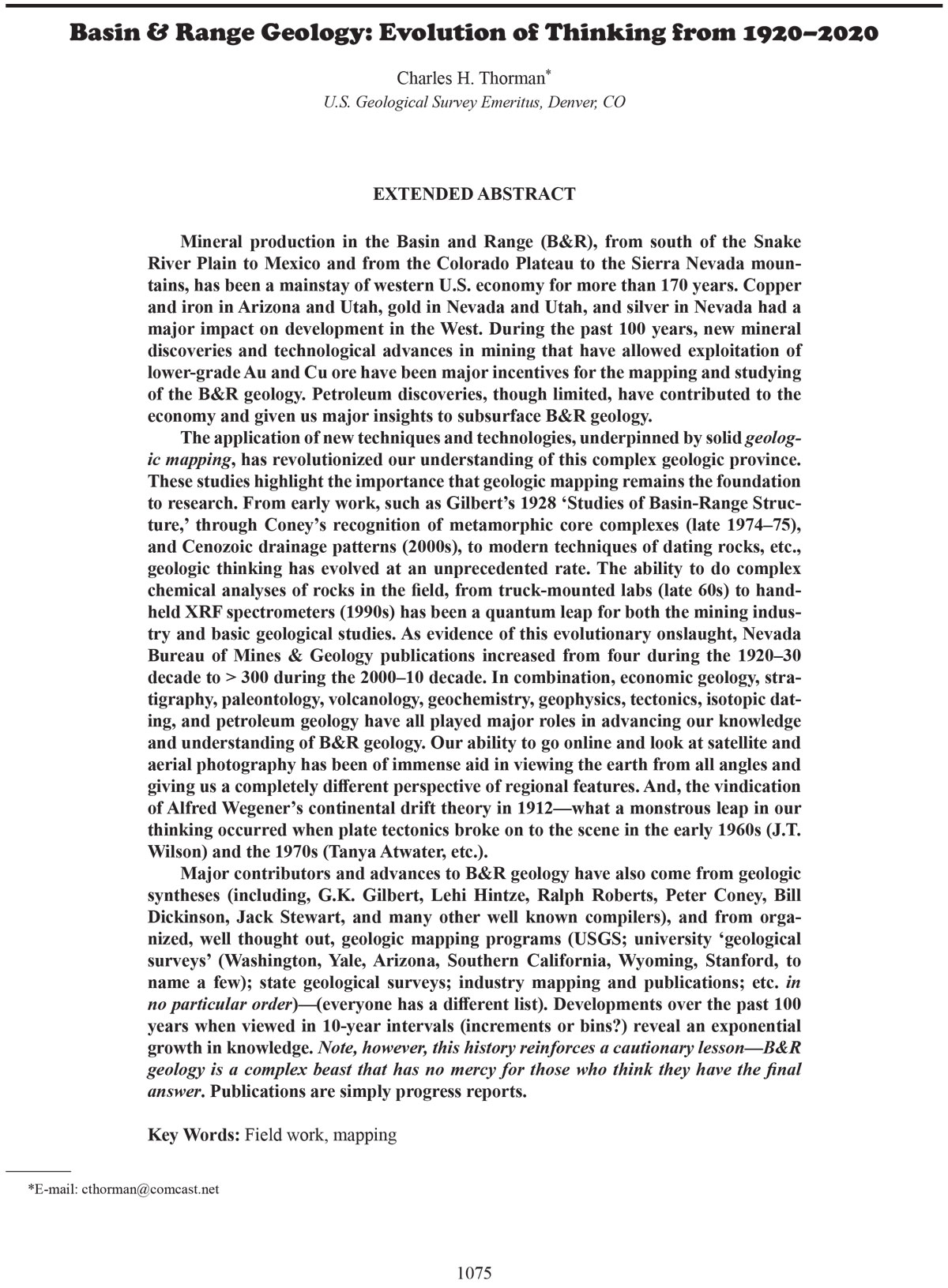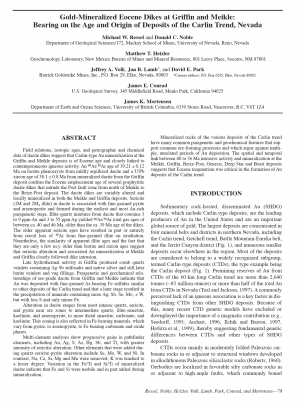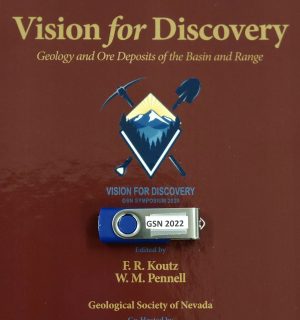Description
Mineral production in the Basin and Range (B&R), from south of the Snake
River Plain to Mexico and from the Colorado Plateau to the Sierra Nevada mountains, has been a mainstay of western U.S. economy for more than 170 years. Copper
and iron in Arizona and Utah, gold in Nevada and Utah, and silver in Nevada had a
major impact on development in the West. During the past 100 years, new mineral
discoveries and technological advances in mining that have allowed exploitation of
lower-grade Au and Cu ore have been major incentives for the mapping and studying
of the B&R geology. Petroleum discoveries, though limited, have contributed to the
economy and given us major insights to subsurface B&R geology.
The application of new techniques and technologies, underpinned by solid geologic mapping, has revolutionized our understanding of this complex geologic province.
These studies highlight the importance that geologic mapping remains the foundation
to research. From early work, such as Gilbert’s 1928 ‘Studies of Basin-Range Structure,’ through Coney’s recognition of metamorphic core complexes (late 1974–75),
and Cenozoic drainage patterns (2000s), to modern techniques of dating rocks, etc.,
geologic thinking has evolved at an unprecedented rate. The ability to do complex
chemical analyses of rocks in the field, from truck-mounted labs (late 60s) to handheld XRF spectrometers (1990s) has been a quantum leap for both the mining industry and basic geological studies. As evidence of this evolutionary onslaught, Nevada
Bureau of Mines & Geology publications increased from four during the 1920–30
decade to > 300 during the 2000–10 decade. In combination, economic geology, stratigraphy, paleontology, volcanology, geochemistry, geophysics, tectonics, isotopic dating, and petroleum geology have all played major roles in advancing our knowledge
and understanding of B&R geology. Our ability to go online and look at satellite and
aerial photography has been of immense aid in viewing the earth from all angles and
giving us a completely different perspective of regional features. And, the vindication
of Alfred Wegener’s continental drift theory in 1912—what a monstrous leap in our
thinking occurred when plate tectonics broke on to the scene in the early 1960s (J.T.
Wilson) and the 1970s (Tanya Atwater, etc.).
Major contributors and advances to B&R geology have also come from geologic
syntheses (including, G.K. Gilbert, Lehi Hintze, Ralph Roberts, Peter Coney, Bill
Dickinson, Jack Stewart, and many other well known compilers), and from organized, well thought out, geologic mapping programs (USGS; university ‘geological
surveys’ (Washington, Yale, Arizona, Southern California, Wyoming, Stanford, to
name a few); state geological surveys; industry mapping and publications; etc. in
no particular order)—(everyone has a different list). Developments over the past 100
years when viewed in 10-year intervals (increments or bins?) reveal an exponential
growth in knowledge. Note, however, this history reinforces a cautionary lesson—B&R
geology is a complex beast that has no mercy for those who think they have the final
answer. Publications are simply progress reports.




